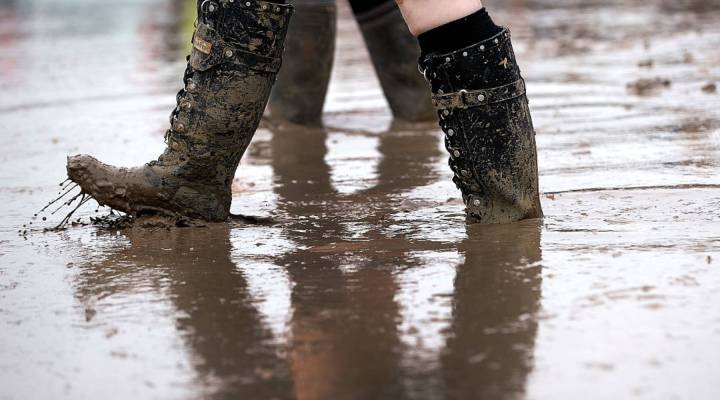
Climate change puts weather on fashion students’ radar

The weather can be a little unpredictable these days, to put in mildly, and unseasonal weather can have an adverse affect on sales of all kinds, from coats to boots to bathing suits. But the retail industry is trying to get on top of the elements rather than just wait for them to wreak havoc.
One famous New York fashion school has even incorporated weather analysis into its coursework.
Gary Wolf teaches fashion business management at the Fashion Institute of Technology. Today he’s co-teaching a new course called Predictive Analytics for Planning and Forecasting: Case Studies with Weatherization. It’s the first time FIT has married math and the business of fashion to help students understand a huge influence on buying behavior: weather.
“Ever since I’ve been in this industry, which is my entire life, everyone’s blamed the weather for their gains and their losses,” he said.

FIT students Amy Condie and Melissa Weilacher work though a problem during class while professor Gary Wolf looks on.
Everyone being retailers — especially fashion retailers. A warm December or chilly June can mean millions of dollars in lost sales of seasonal merchandise. But these days big data is giving professional analysts — and these students — an edge in predicting how weather could affect sales or inventory buildup.
Student Amy Condie said they’re looking at things like “whether there’s going to be a spike in the demand for winter coats for certain months, and then we de-seasonalize, re-seasonalize and yeah, basically ensure we’re getting the right amount of product.”
“De-seasonalizing” is a complicated calculation that’s a way to smooth out data in a calendar year. Climate change is making the weather more volatile, and businesses are using analytics to mitigate the effects on sales.
Evan Gold is vice president at Planalytics, a firm that helps retailers quantify the economic impact of weather. He said, for example, a year ago December, in the east, was much warmer than usual. So when that forecast came in, his advice to clients desperate to shift thousands of coats and sweaters?
“Focus on areas where it was cold,” he said, “and either move the product there or try to do some regional marketing to get customers into the areas where it was going to be cold.”
Then at the end of 2016 there was a sudden cold snap in the east. It was a perfect opportunity to hit up consumers who hadn’t seen the need to invest in warm clothing.
“So retailers and businesses will market to those consumers either on mobile devices or traditional email to get them to come into their specific place of business,” Gold said.
That cold period gave retailers selling coats, boots and gloves a $350 million boost over the year before.
There’s a lot happening in the world. Through it all, Marketplace is here for you.
You rely on Marketplace to break down the world’s events and tell you how it affects you in a fact-based, approachable way. We rely on your financial support to keep making that possible.
Your donation today powers the independent journalism that you rely on. For just $5/month, you can help sustain Marketplace so we can keep reporting on the things that matter to you.


















